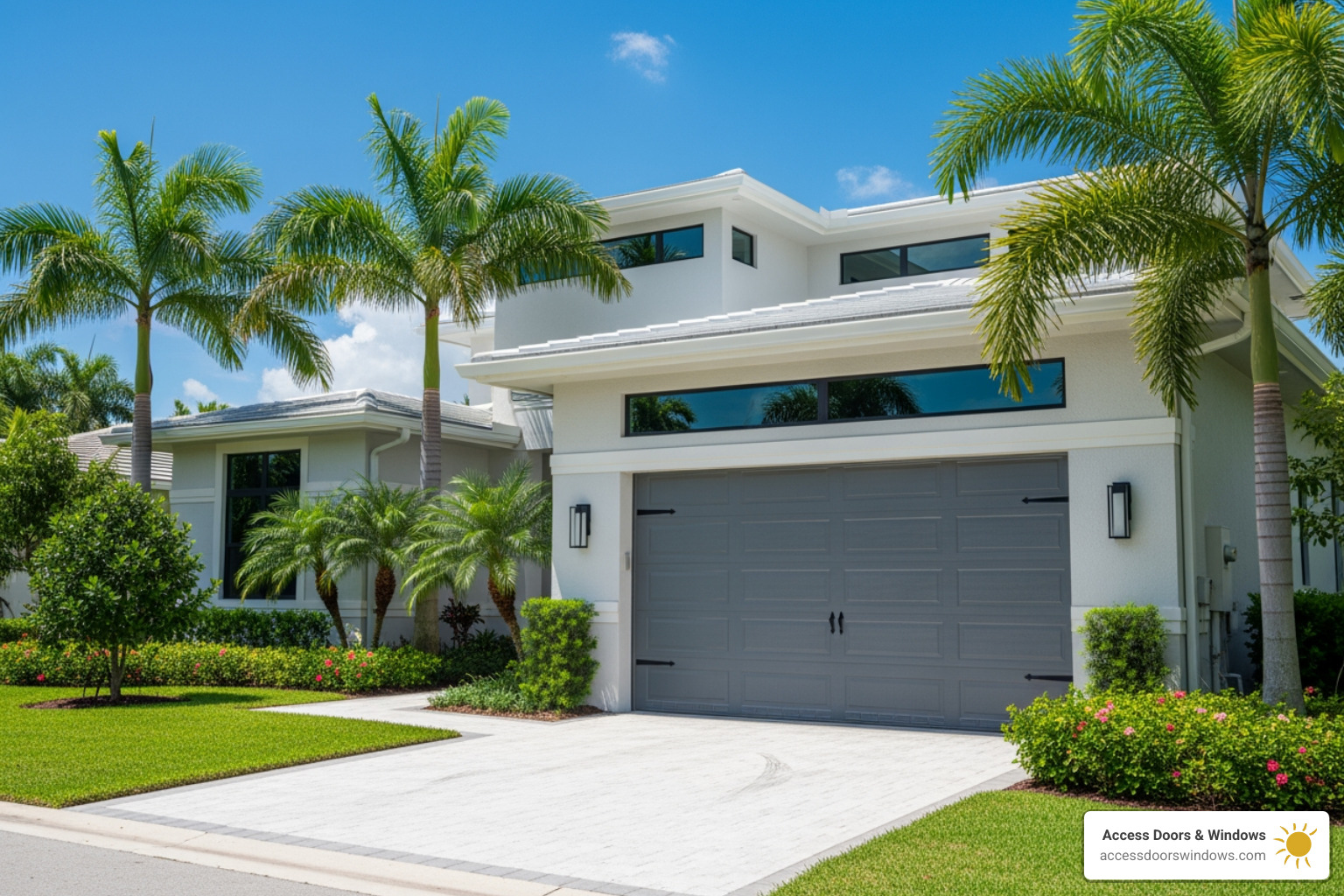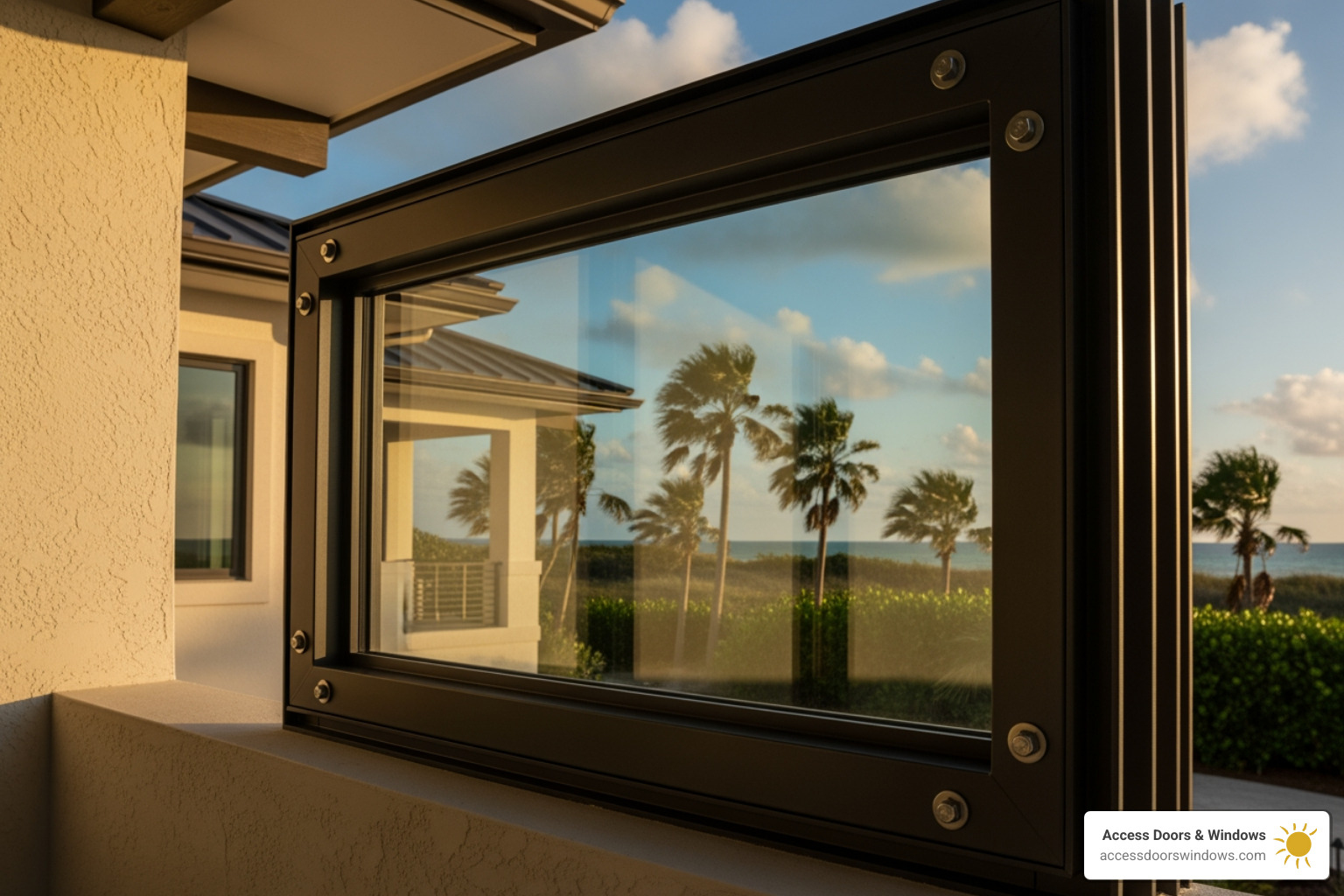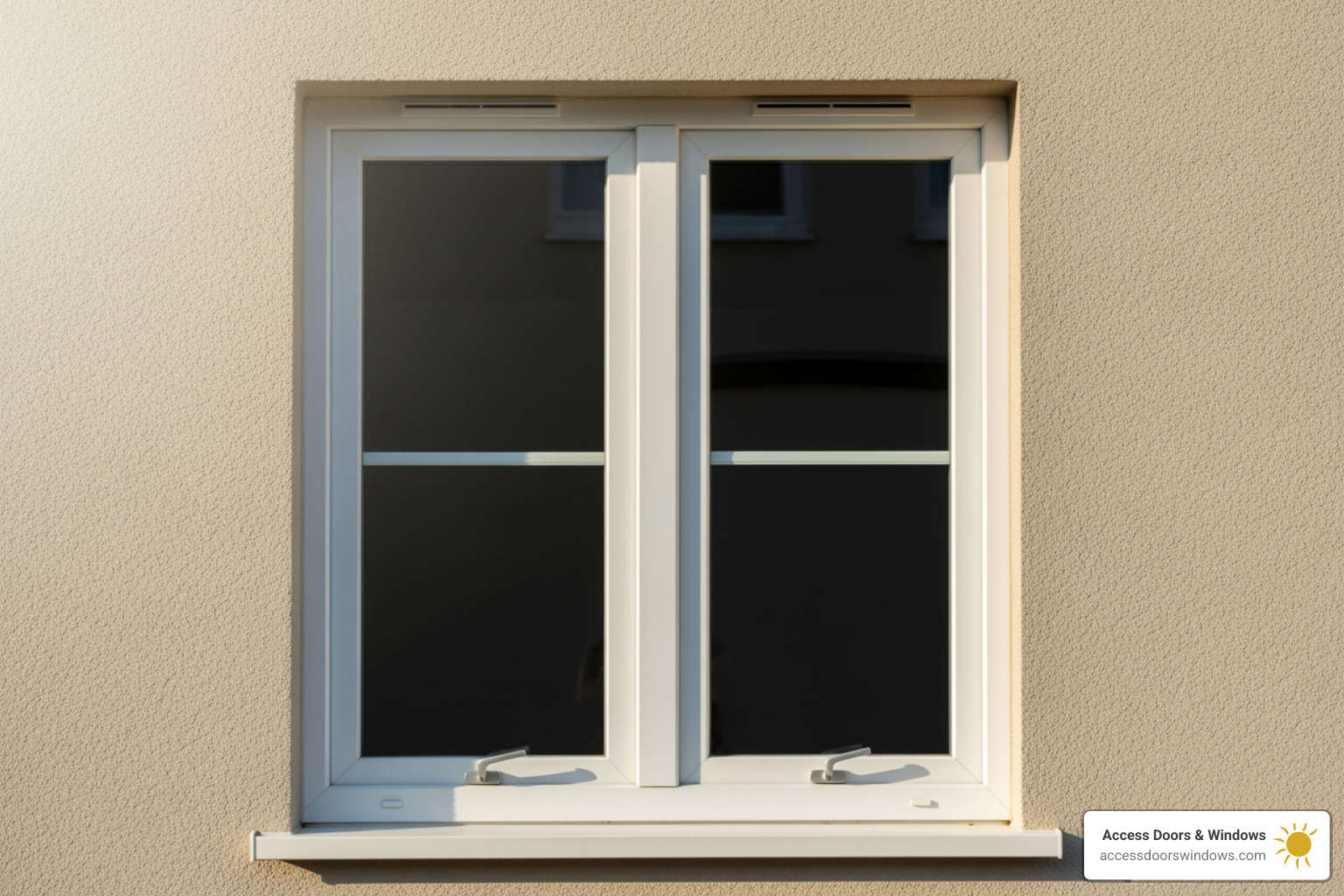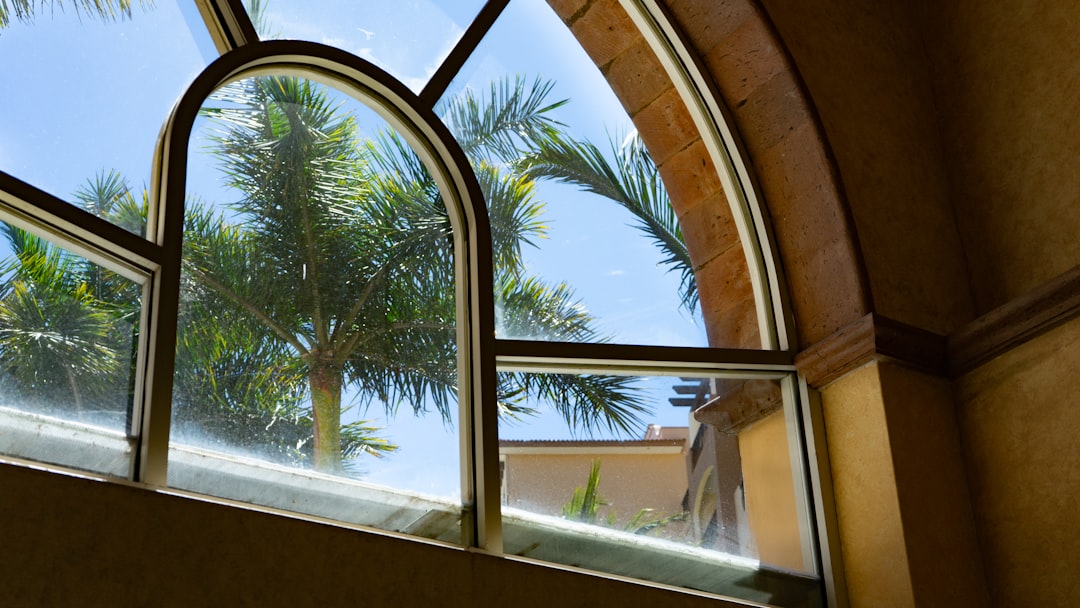Energy-Efficient Window Options: Top 5 Best Picks 2025
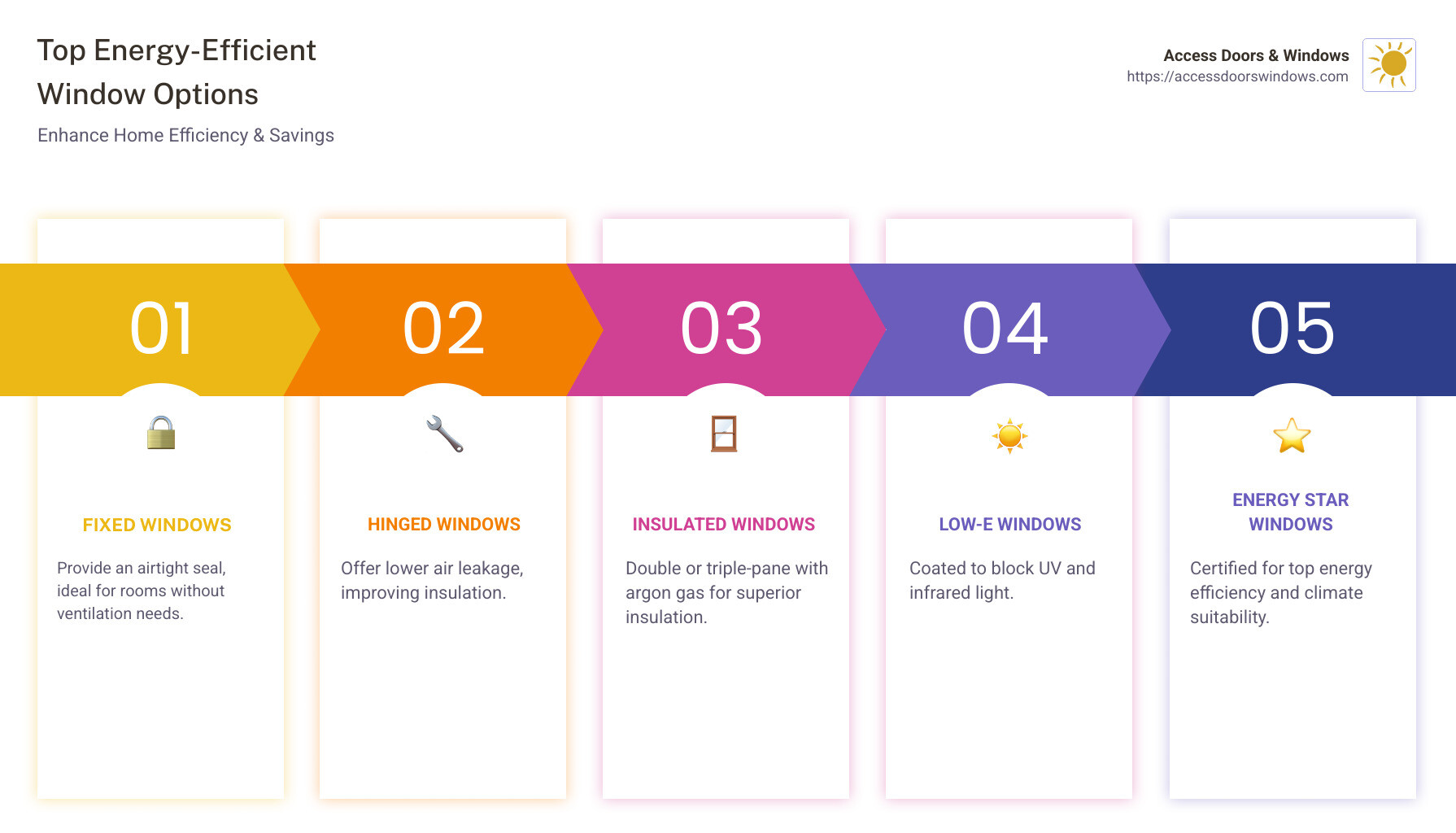
Energy-efficient window options can greatly impact your home’s comfort and your energy bills. If you’re looking for windows that improve thermal performance, consider these options:
- Fixed Windows: Provide an airtight seal, perfect for rooms without ventilation needs.
- Hinged Windows: Offer lower air leakage rates, ideal for better insulation.
- Insulated Windows: Double or triple-pane with argon gas for superior insulation.
- Low-E Windows: Use special coatings to block UV and infrared light.
- ENERGY STAR Windows: Certified for top energy efficiency and climate suitability.
Choosing the right type can significantly improve your home’s energy efficiency and reduce costs.
Whether you live in a coastal area like South Florida with its unique challenges or just aim for a greener lifestyle, understanding the right window options can offer both protection and savings. Energy-efficient windows do more than just keep the drafts out. They help reflect heat, reduce UV damage, and contribute to reducing energy waste. Selecting the best option custom for your climate and home needs ensures that you get the most benefit, both in comfort and in your pocketbook.
Understanding Energy-Efficient Windows
When it comes to energy-efficient window options, several key factors can make a big difference in how well they perform. Let’s break down the essentials: frame materials, glazing options, gas fills, and the U-factor.
Frame Materials
The material of your window frame plays a crucial role in energy efficiency. Here’s a quick look at some popular options:
-
Vinyl Frames: Made from PVC, these frames offer good moisture resistance and don’t need painting. They can be filled with insulation to boost thermal resistance.
-
Wood Frames: Provide excellent insulation but require regular maintenance. Cladding with aluminum or vinyl can reduce upkeep.
-
Fiberglass Frames: Known for their stability, these can be insulated for superior thermal performance.
-
Composite Frames: Made from wood products mixed with polymers, these frames offer great thermal properties and resist moisture and decay.
Glazing Options
The glass in your windows, or glazing, is another critical element. Most modern homes use double or triple glazing. Here’s why:
-
Double and Triple Glazing: These windows have two or three panes of glass with insulating spaces between them. This setup reduces heat transfer and improves insulation.
-
Low-Emissivity (Low-E) Coatings: These are thin metallic coatings that reflect heat while allowing light to pass through. They can significantly reduce energy loss.
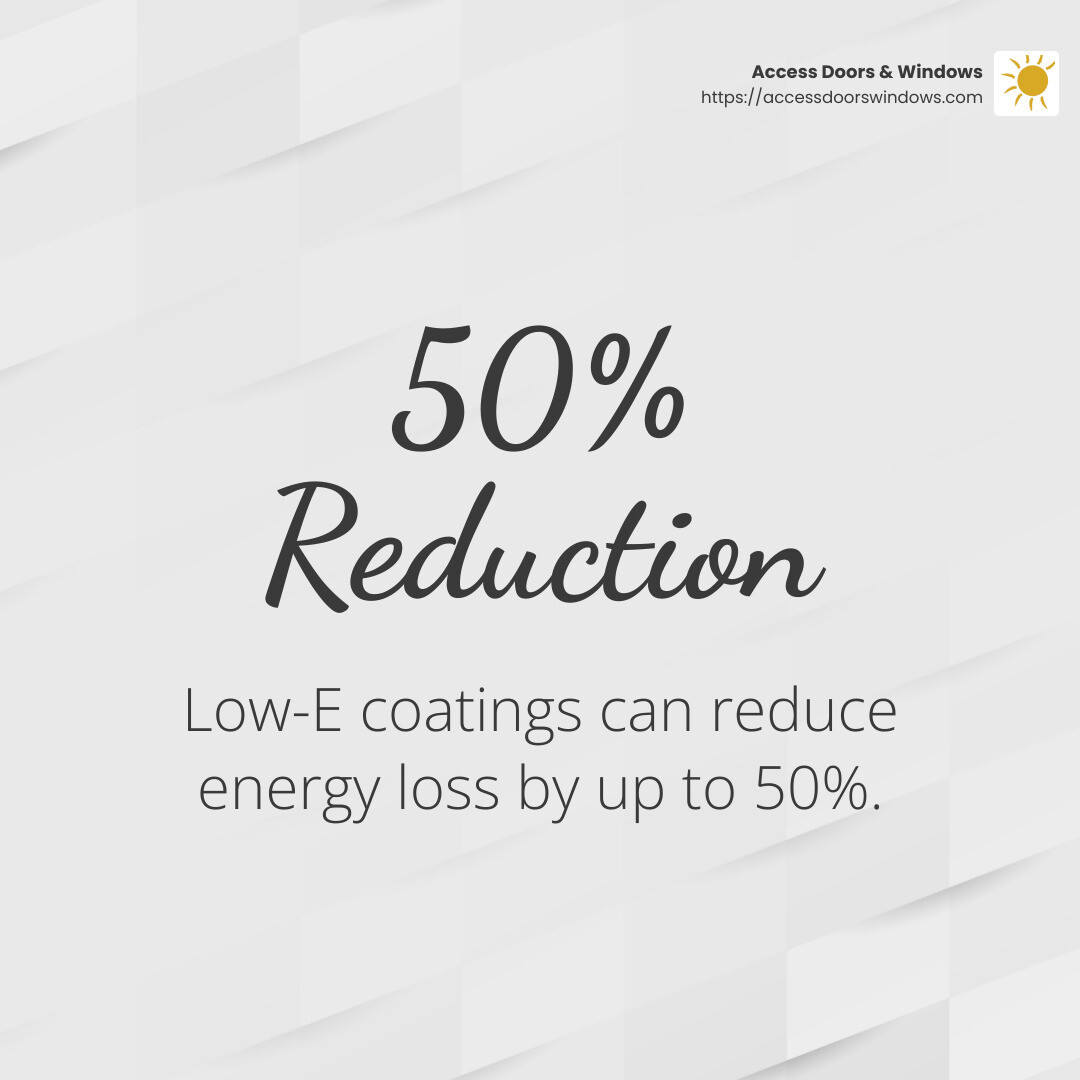
Gas Fills
Between the panes of glass, manufacturers often use gas fills to improve insulation:
-
Argon Gas: Commonly used because it’s affordable and effective in standard-sized spaces.
-
Krypton Gas: Offers better thermal performance for thinner spaces but comes at a higher cost.
U-Factor
The U-factor measures how well a window prevents heat from escaping. The lower the U-factor, the better the window insulates. This is especially important in colder climates where heat retention is crucial.
In summary, the right combination of frame materials, glazing options, gas fills, and a low U-factor can make your windows significantly more energy-efficient. By choosing wisely, you can enjoy a more comfortable home and lower energy bills.
Top Energy-Efficient Window Options
Choosing the right energy-efficient window options can make a huge difference in your home’s comfort and energy bills. Here’s a look at some top choices:
Fixed Windows
Fixed windows are known for their airtight seal. Since they don’t open, there’s no risk of air leakage. This makes them a fantastic choice for areas where ventilation isn’t needed but insulation is key. They can be part of a larger window design to create stunning views without sacrificing energy efficiency.
Hinged Windows
Hinged windows, like casement windows, are designed to open outward. Their design ensures a tight seal when closed, reducing air leakage significantly. This makes them more efficient than traditional sliding windows. Casement windows are especially popular in areas with windy conditions, as they seal tighter when the wind blows toward them.
Insulated Windows
When it comes to insulation, double-pane and triple-pane windows are top contenders. These windows include two or three layers of glass, with spaces filled with gases like argon to boost insulation. While double-pane windows are effective, triple-pane windows provide superior insulation, especially in extremely cold climates, though they can reduce light transmittance slightly.
Low-E Windows
Low-E (low-emissivity) windows have a special coating that reflects infrared light, keeping heat inside in the winter and outside in the summer. They also block harmful UV rays, protecting your furniture and floors from fading. This makes them a smart choice for maintaining a comfortable home environment while reducing energy costs.
ENERGY STAR Windows
ENERGY STAR windows are certified for their high energy efficiency. They meet strict criteria based on climate-specific needs, ensuring optimal performance in different regions. Look for the ENERGY STAR label to find windows that are custom to your climate, offering both energy savings and comfort.
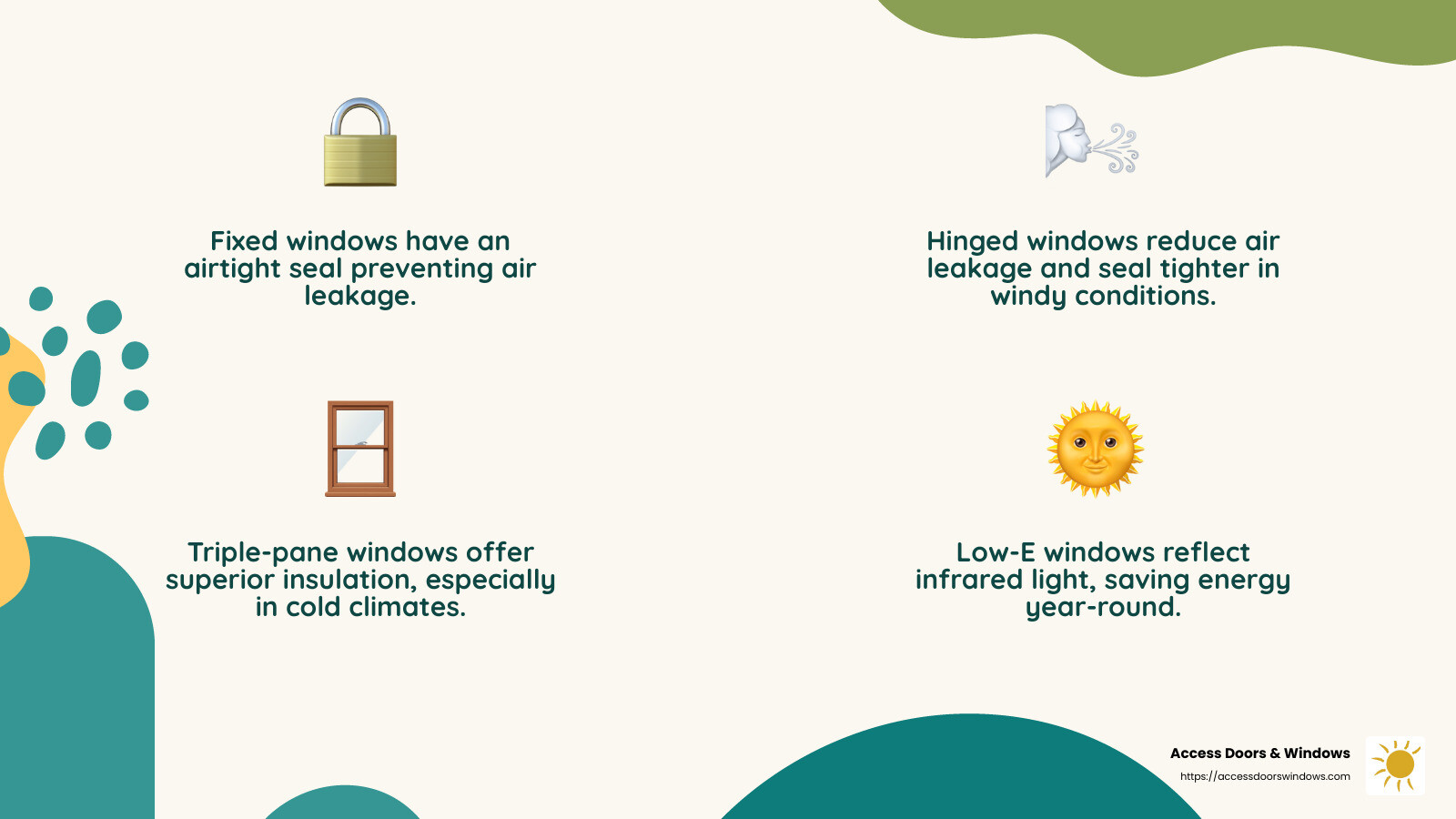
These energy-efficient window options not only help reduce energy bills but also improve your home’s comfort and value. Next, let’s explore how to choose the right windows for your specific needs.
How to Choose the Right Energy-Efficient Windows
Selecting the best energy-efficient windows for your home involves considering several crucial factors. Here’s a breakdown to help you make an informed decision:
Understanding the NFRC Label
The NFRC label is your guide to understanding a window’s energy performance. It provides ratings on key factors such as U-factor, Solar Heat Gain Coefficient (SHGC), and Visible Transmittance (VT).
- U-factor measures how well a window prevents heat from escaping. The lower the number, the better the insulation.
- SHGC indicates how well the window blocks heat from sunlight. A lower SHGC means less solar heat is transmitted.
- VT shows how much natural light the window lets in. Higher values mean more light.
By comparing these ratings, you can choose windows that suit your climate and energy needs.
Climate Considerations
Your local climate greatly influences which energy-efficient window options are best for you. In colder areas, windows with a low U-factor are essential to keep heat inside. Meanwhile, in hotter climates, look for windows with a low SHGC to block excess heat from the sun.
ENERGY STAR windows are an excellent choice because they are custom to specific climate zones. This ensures that you get windows optimized for your region’s weather conditions.
Whole Unit Performance
When evaluating windows, consider the performance of the whole unit, not just the glass. A well-insulated frame is just as important as the glazing. Different materials like vinyl, wood, and aluminum offer varying levels of insulation and maintenance needs.
- Vinyl frames are cost-effective and provide good insulation.
- Wood frames offer excellent insulation but require more upkeep.
- Aluminum frames are durable and great for humid climates but aren’t as insulative as other materials.
Consider the overall construction and installation quality to ensure maximum energy efficiency. Proper installation is crucial to prevent air leaks and ensure the window performs as rated.
By focusing on these factors—NFRC label, climate considerations, and whole unit performance—you can confidently choose windows that improve your home’s energy efficiency and comfort. Up next, we’ll address some frequently asked questions about energy-efficient windows.
Frequently Asked Questions about Energy-Efficient Windows
Which type of window is most energy-efficient?
When it comes to energy-efficient window options, triple-pane windows are at the top of the list. They have three layers of glass with insulating gas, like argon or krypton, between them. This design provides superior insulation, reducing heat loss and keeping your home comfortable year-round.
Triple-pane windows not only improve energy efficiency but also offer better sound insulation. This makes them ideal for homes in noisy areas. While they are more expensive than double-pane windows, the long-term energy savings can make them a worthwhile investment.
How does the 30% tax credit for energy-efficient windows work?
Installing ENERGY STAR windows can make you eligible for a tax credit. This credit covers up to 30% of the cost of the windows, with a maximum credit of $600.
To qualify, the windows must meet specific performance criteria for your climate zone. It’s a great way to reduce the upfront cost of upgrading to energy-efficient windows. Always consult with a tax advisor to ensure eligibility and understand how to apply this credit to your tax bill.
Do energy-efficient windows really make a difference?
Yes, energy-efficient windows can significantly impact your home’s energy consumption. By reducing heat loss and gain, these windows help maintain a stable indoor temperature. This means your heating and cooling systems don’t have to work as hard, leading to reduced energy bills.
In fact, replacing single-pane windows with energy-efficient ones can result in substantial annual savings. This is especially true in areas with extreme temperatures, where heating and cooling costs are high. Besides saving money, energy-efficient windows also contribute to a more sustainable and comfortable living environment.
By understanding the benefits and incentives associated with energy-efficient windows, you can make informed decisions that benefit both your wallet and the planet.
Conclusion
At Access Doors & Windows, we are committed to providing our customers with top-notch service and products that offer both energy efficiency and hurricane protection. As a family-owned business with deep roots in Florida, we understand the importance of safeguarding your home against extreme weather while also keeping energy costs down.
Customer satisfaction is at the heart of everything we do. We focus on delivering quality installations of energy-efficient window options that meet your needs and preferences. Our team is dedicated to ensuring every step of the process, from consultation to post-installation support, is handled with care and precision. We aim to make your experience as seamless and stress-free as possible.
Living in hurricane-prone areas like Florida requires special attention to window choices. Our hurricane impact-resistant windows provide robust protection against high winds and flying debris, giving you peace of mind during storm season. These windows not only improve safety but also improve your home’s energy efficiency, leading to potential savings on both energy bills and insurance premiums.
By choosing Access Doors & Windows, you’re investing in a company that values your safety, comfort, and satisfaction. We proudly serve various locations across Florida, including Boca Raton, Deerfield Beach, and Fort Myers.
For more information on how our hurricane impact windows can benefit your home, visit our service page. Let us help you protect your home and enjoy the benefits of energy efficiency today.

